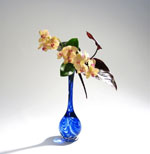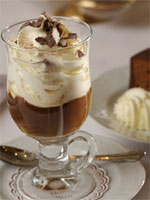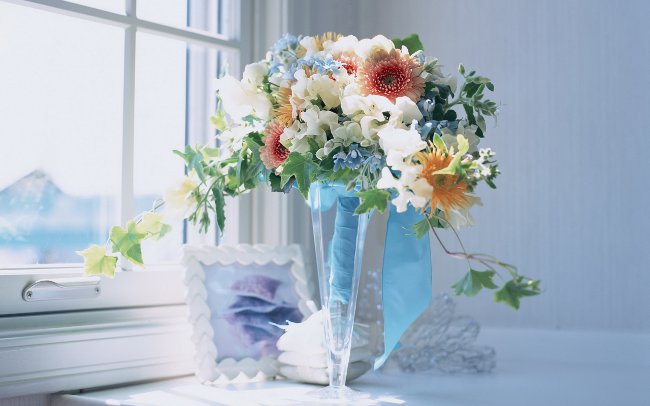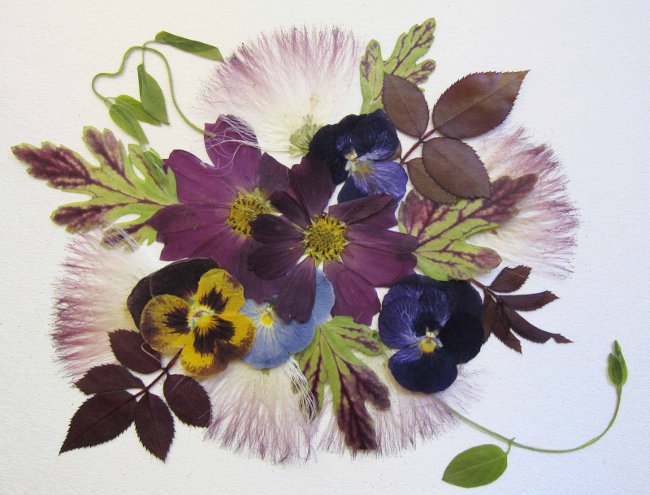Ikebana - art of flower arrangement

Japanese art of flower arrangement, called ikebana, has many fans not only in theJapan, but also all over the world. "Flowers that live", and this is exactly translated literally "Ikebana", serve as a beautiful decoration for the interior, and Ikebana as a hobby is fond of a wide range of people.
The art of ikebana, considered traditionally Japanese, actually originated in India, from where, along with Buddhism, it got to China, and then to Japan. Initially, ikebana was used for ritualistic rituals as an offering to the Buddha and the spirits of ancestors. Each element of the composition in ikebana had its definite meaning, and until now the real ikebana is imbued with deep symbolism and mysterious meaning.
<p <strong >> To date, there are more than 300 different schools and directions of ikebana.</ strong> So, the most famous in Japan are the schools Ikenobo, Ohara, Sogetsu. Each of the schools of ikebana has its own characteristics. Ikenobo is considered the first school for the development of ikebana. It was founded in the 15th century, in Kyoto. In this school, traditional styles of ikebans are being studied, such as rikka and beech. </ p>
School Ohara was founded in 1897 and its maina distinctive feature is the invention of the Moriban style. The style of moribane is characterized by the use of low flat vessels for flowers, as well as the use of kendzwans - metal nakolok-holders for flowers.
Sogetsu - the most modern of the named ikebana schools. It was founded in 1927 and is considered to be an avant-garde school. Here, unlike other schools, for the ikebana, the practice is not only of using live flowers, but also of other materials: stone, cloth, metal, dry plants, etc.
The composition of the ikebana involved the actual plants and flowers, a vessel and a stand. And the proportions of the main elements of ikebanaare calculated based on the size of the vessel, and the vessel itself must necessarily correspond to the selected plant material. Preferably, the vessel is monophonic.
In the composition of ikebana, 3 basic constructive elements, "branches", traditionally participate. Sometimes the number of branches reaches from two to nine. Ikebana is characterized by asymmetry and its elements form a triangle, as it were. This "triangle" should not be vertical or horizontal, its elements should not be in the same plane.
The three main "branches" in ikebana have their philosophical significance. "Syn" - a symbol of the sky, the guiding principle. Soe - a symbol of man, and Hikae Is a symbol of the earth. The branch "syn" is the longest, it sets the direction of the entire composition, its dynamics. "Soe" is shorter in comparison with "syn" and is equal to it in direction and form. Balances the composition "hikai" - the shortest branch and in its direction it is opposite to the other two branches.
For the line "syn" the largest, most beautiful branch or flower is chosen. The length of the "syn" element is calculated as a sum of the diameter and height of the vase for the futureikebana if the composition is small. If the ikebana is large, then the size "syn" should be equal to the double sum of the diameter and height of the vase. The length of the soy is equal to 3/4 "syn," and the length is "hikaye" - 3/4 "soe." In this case, the length of branches should be counted from the upper edge of the vase, and the diameter of the vase - determined by its widest area.
In ikebana, the elements are arranged at an angle to each other. There are two main forms of ikebana, depending on the angle of the composition: upright and inclined. AT upright composition The main branch ("syn") must be put directly, andthen tilt 15 degrees to the left of yourself, the second branch should be placed at an angle of 45 ° and tilt to the left ahead. And, finally, the third branch should be immediately installed at an angle of 75 ° to the right to the right.
Inclined shape of ikebana differs from the upright location of the branch "syn" - it should be tilted at an angle of 45 ° to the left forward. Then "soe" is located at an angle of 15 ° to the left, and "hikaye" - 75 ° to the right.
When preparing ikebana, do not be afraid of strict rules. In modern ikebana you can safely use a variety of unusual materials, vessels of unusual shape, use unusual combinations of colors, because the main thing in ikebana is a manifestation of fantasy.














